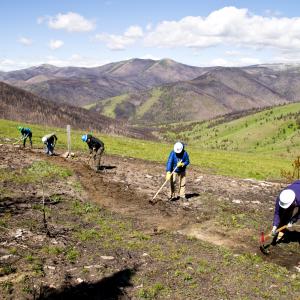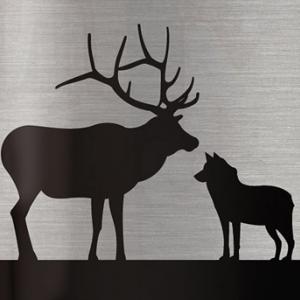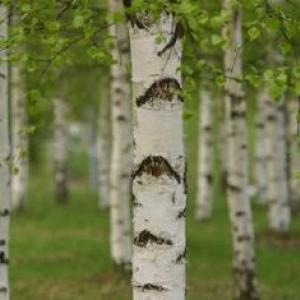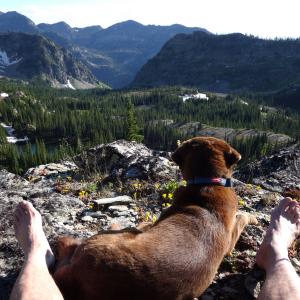Types of Trees Native to Montana
Of all U.S. states, Montana has the fourth largest geographic area. Montana has a rapidly growing tourist industry, with about 13 million visitors each year.
When it comes to natural splendor, Montana is an amazing state. If you are planning on taking a trip to the state, you will want to prep yourself on some of the basics associated with the outdoor beauty that is Montana. For example, you will want to have an understanding about some of the trees that are native to Montana.
Ponderosa Pine
The Ponderosa pine is the Montana state tree. The ponderosa pine is the most widely distributed type of pine tree in the United States. It also grows to being one the largest pine trees in the country as well. The Ponderosa Pine is also known as the Bull Pine, Blackjack Pine, or Western Yellow Pine.
The bark of the Ponderosa Pine sets it apart from other derivations of the pine tree. The bark of the Ponderosa Pine is yellow to orange-red in color.
Douglas Fir
Unlike the Ponderosa Pine, the Douglas Fir has a much smaller area in which this tree can be found growing. The Douglas Fir normally is found in the moist soil on the north facing side of mountains. The Douglas Fir grows at moderate elevations to between 5,000 and a bit over 7,000 feet.
The Douglas Fir is classified as a evergreen conifer species. It grows throughout the Rocky Mountains.
Douglas Firs grow to become medium size to very large evergreen trees. Away from its natural environment like Montana, Douglas Fir trees are widely used as ornamental growths in residential and other types of landscaping.
Lodgepole Pine
Native to Montana, the Lodgepole Pine is also known as the Shore Pine, the Twisted Pine, and the Contorta Pine. The moniker Lodgepole Pine originates from the fact that native people of North America utilizes these trees as poles for their teepees or lodges.
Lodgepole Pines grow in dense stands. They grow at a elevation between 3,000 and 8,500 feet.
Lodgepole Pine trees have a unique interaction with fire. The cone of a Lodgepole Pine may remain opened for years. The moment a Lodgepole Pine is exposed to fire, the cone will open and spread seeds into the burned soil surrounding the tree. Thus, this type of tree is able to rebound following a fire in fairly quick speed.
Western Larch
The Western Larch is another tree native to Montana. The tree grows at elevations between 2,000 and 7,000 feet. The Western Larch prefers moist locations. The Western Larch is a type of conifer that loses its needles in the fall, as is the case with deciduous trees.
The Western Larch is a slow-growing tree. The tree can grow to be quite large. In addition, the Western Larch is capable of living over 500 years.
The Western Larch has an interesting history when it comes to health and human beings. The Western Larch was used by Plateau Indian tribes for medicinal purposes. The drank an infusion made from young shoots of the Western Larch. The infusion was used to treat tuberculosis and laryngitis.
Subalpine Fir
Another tree native to the state of Montana is the Subalpine Fir. The Subalpine Fir grows at any elevation of about 3,500 to the tree line. This is conifer that can grow in a number of different conditions. The tree grows in extremely cold as well as dry climates.
The Subalpine Fir is classified as a medium size tree. The bark on young Subalpine Firs is smooth, gray, and has resin blisters. When the tree grows older, its bark becomes rough and scaly.
Aspen
The Aspen tree is also native to the state of Montana. Aspen trees favor cooler climates across the northern region of the Northern Hemisphere, making Montana an ideal location for this tree.
Aspen trees commonly are found in moist locations. This includes areas near streams or at spring fed groves.
Aspen trees are readily identified in the fall because of their gold leaves. Indeed, people visit Montana in the fall to take in Aspen trees as their leaves change color.
Visit Montana
As mentioned previously, tourism is big business in Montana. The state is home to two fantastic national parks. These are Glacier and Yellowstone.
If you want more information about planning a trip to Montana, you can call Visit Montana at (800) 847-4868. The experienced team at Visit Montana can assist you in planning all aspects of your visit to Big Sky Country.
=====
Jessica Kane is a professional blogger who writes for Scaffold Store, the favorite and trusted scaffold supplier of the largest contractors.



